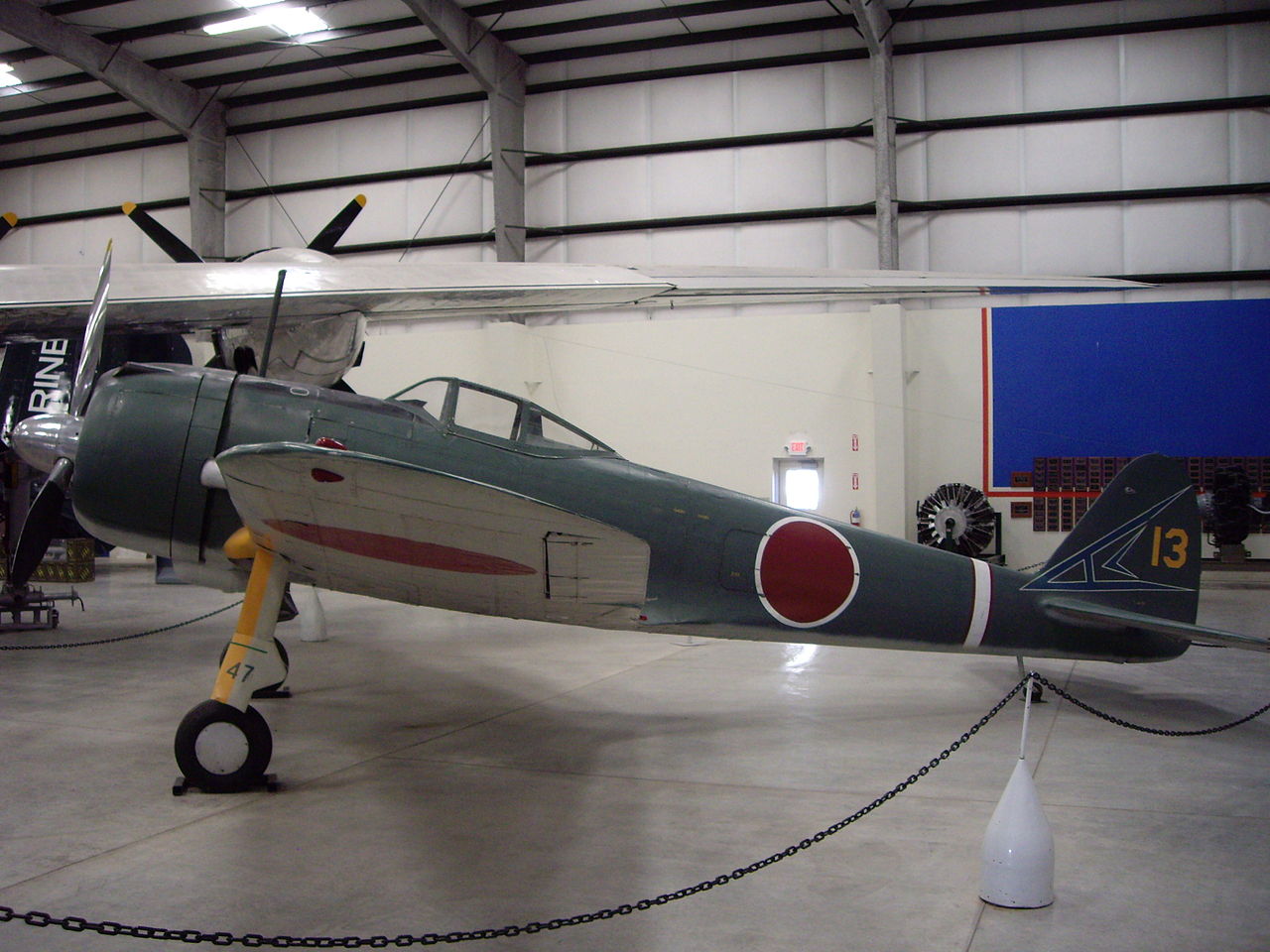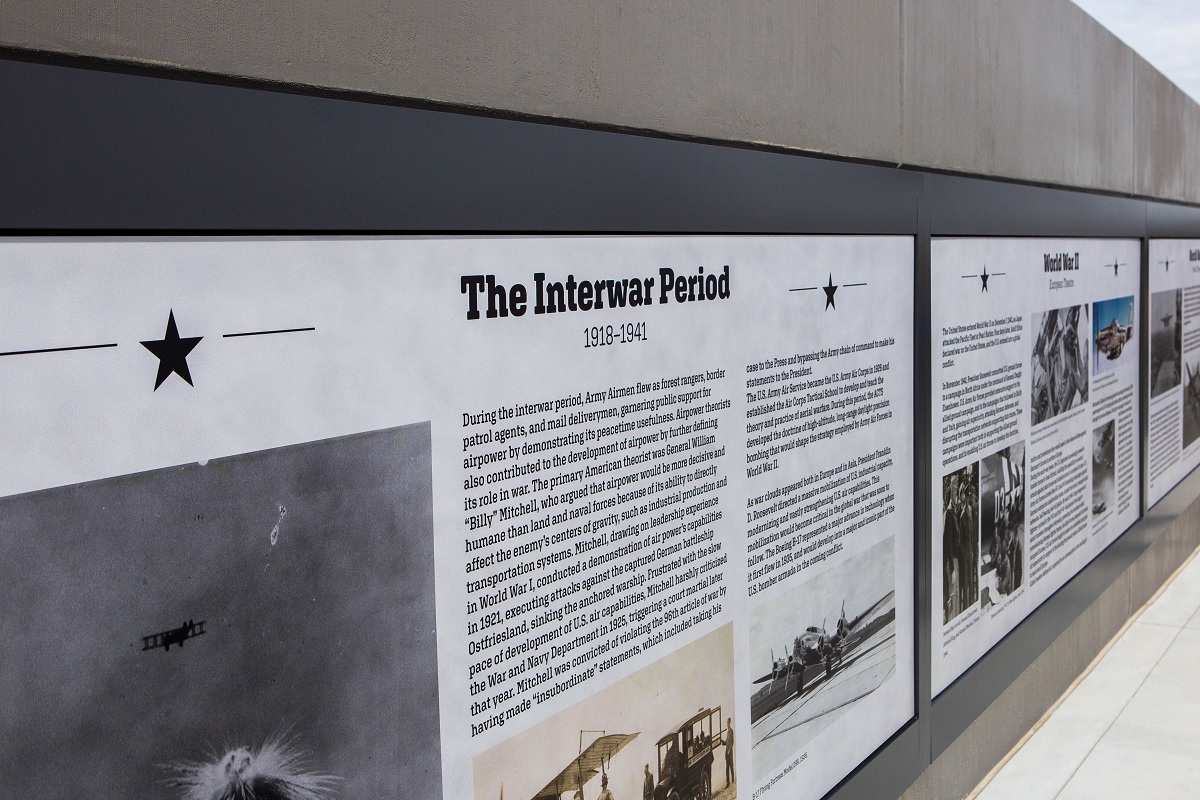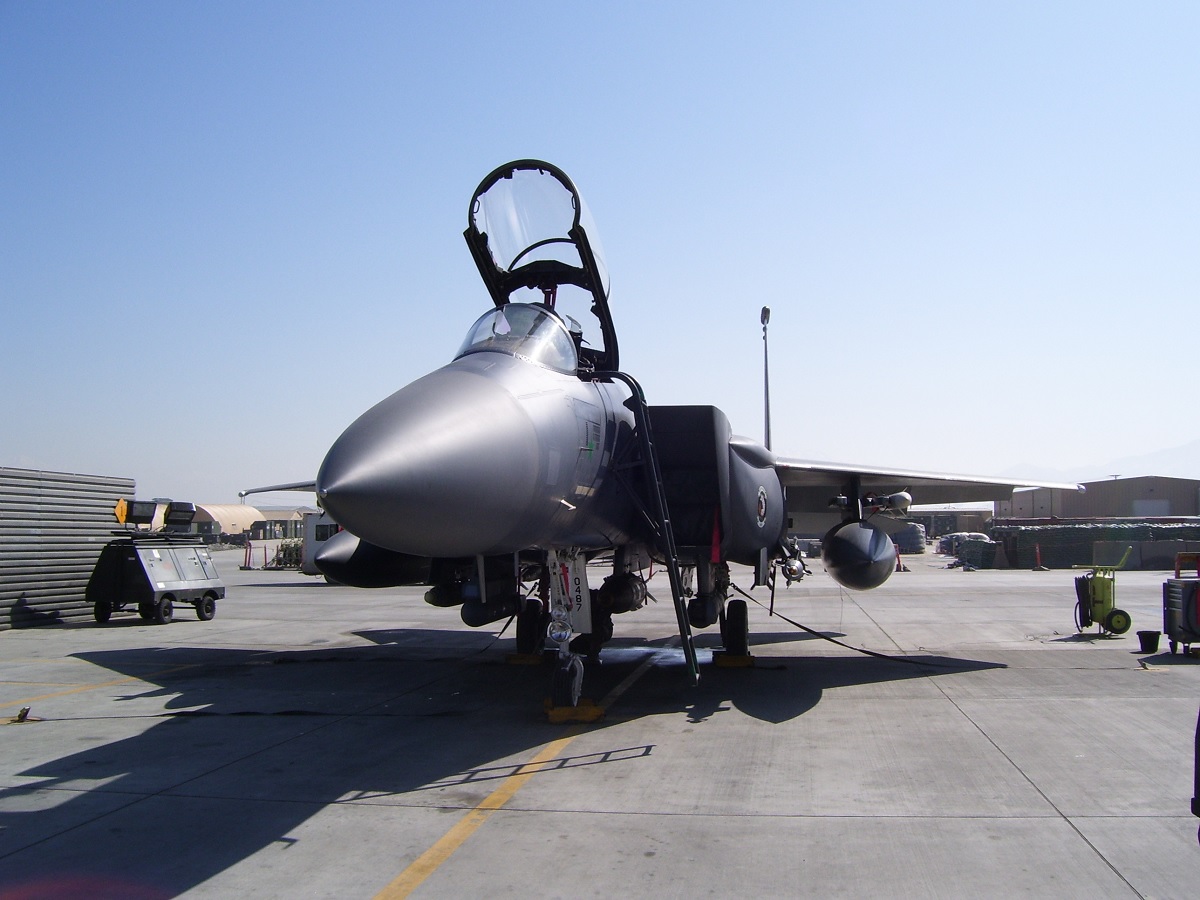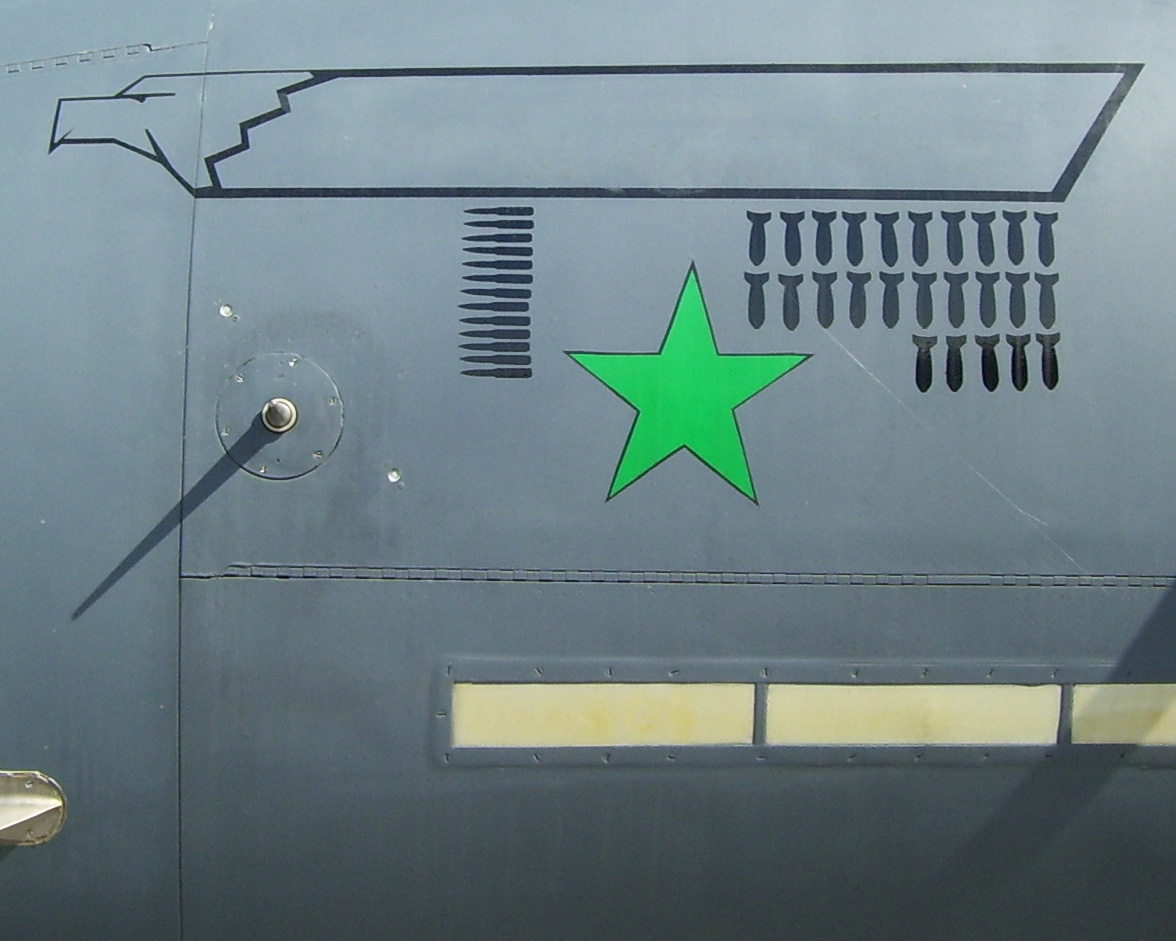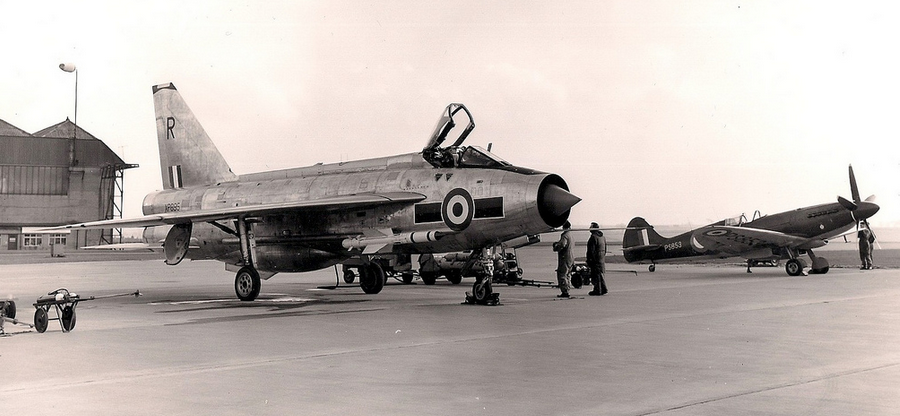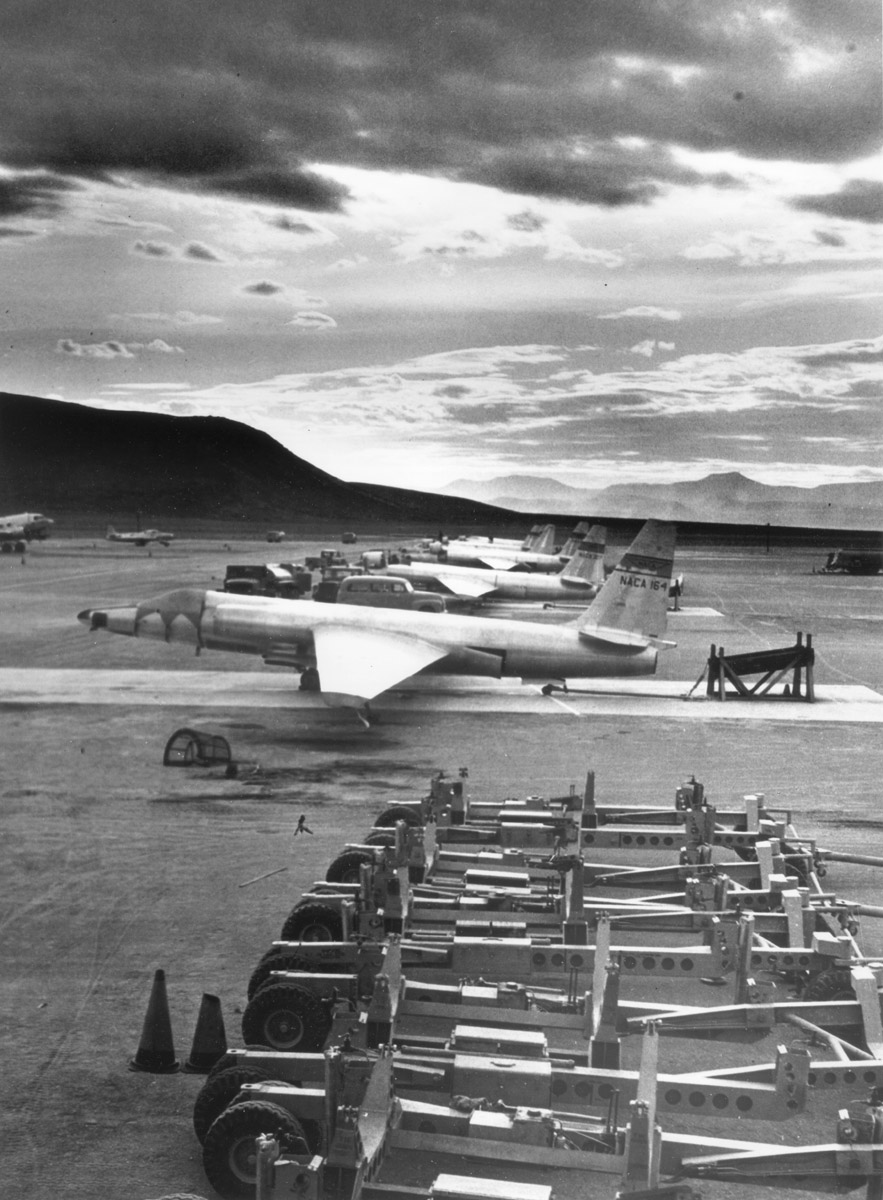“With no drag chute doors, the drag chute had departed the aircraft and was lost at sea. We were grateful to the Lockheed engineers for designing the drag chute to lock to the aircraft only when the drag chute handle was pulled. One can only imagine the effect of the chute deploying in-flight at Mach 1.5!” Former SR-71 RSO Lt. Col. Curt Osterheld
The SR-71’s drag chute system was employed to assist the plane in stopping while it was rolling out for landing. The drag chute compartment was between the two rudders, on the top of the rear fuselage. The drag chute compartment doors opened and several chutes started to deploy when the pilot pulled on the drag chute T-handle on the instrument panel.
The “pilot chute” was the first chute to eject (forty-two-inch diameter). Its task was to draw out the “extraction chute,” which had a ten-foot diameter and produced aerodynamic lift when it touched the air stream. These two chutes both descended to the runway.
When the extraction chute hit the air stream, it pulled the safety pin holding the main chute in place. As the safety pin was taken out, the main chute, which had a forty-foot diameter and was attached to the aircraft, could now open and slow the sixty-thousand-pound (plus fuel) SR-71. The landing rollout caused the chute to be launched into the runway at a speed of 55 knots.
RSO Lt. Col. Curt Osterheld (Ret) explains that the drag chute doors occasionally opened accidentally at high Mach, causing issues, in Col. Richard H. Graham’s book The Complete Book of the SR-71 Blackbird:
“In January 1984, Joe [Pilot Lt. Col. Joe Matthews] and I were on our first operational tour at Det 1, Kadena AB, Okinawa, Japan. The mission profile took us west on an ELINT collection over the South China Sea and then east across the DMZ in Korea. We were in acceleration after our initial refueling. At about Mach 1.5, we felt a sharp jolt that shook the aircraft violently. We both passed it off as clear air turbulence and pressed on. After a while, Joe remarked that the trim didn’t look right so I calculated a manual CG (Center of Gravity) and confirmed that for our fuel indications, it was correct, although the CG seemed to be moving all over the place.
By now we noticed we were about three thousand pounds low on the fuel curve and rapidly getting farther behind. The autopilot kept kicking off. The aircraft would not stay trimmed. At last, we were so far down the fuel curve that there was no alternative but to abort back to Kadena. The descent gave us plenty of unstarts as I broadcast the appropriate HF message, admitting our failure to the whole world. The new guy’s paranoia crept in as we wondered what we had screwed up. The approach to runway 05R was uneventful, and Joe made a perfect landing. Then, as we both spouted expletives, we realized there was no reassuring tug from the drag chute — it had failed, or so we thought. Some judicious braking and rapid-fire discussion over the radio about arming/disarming the barrier, and the SR was brought to a safe stop. As we taxied into the hangar, a lot of ashen-faced maintenance folks were pointing at our jet.
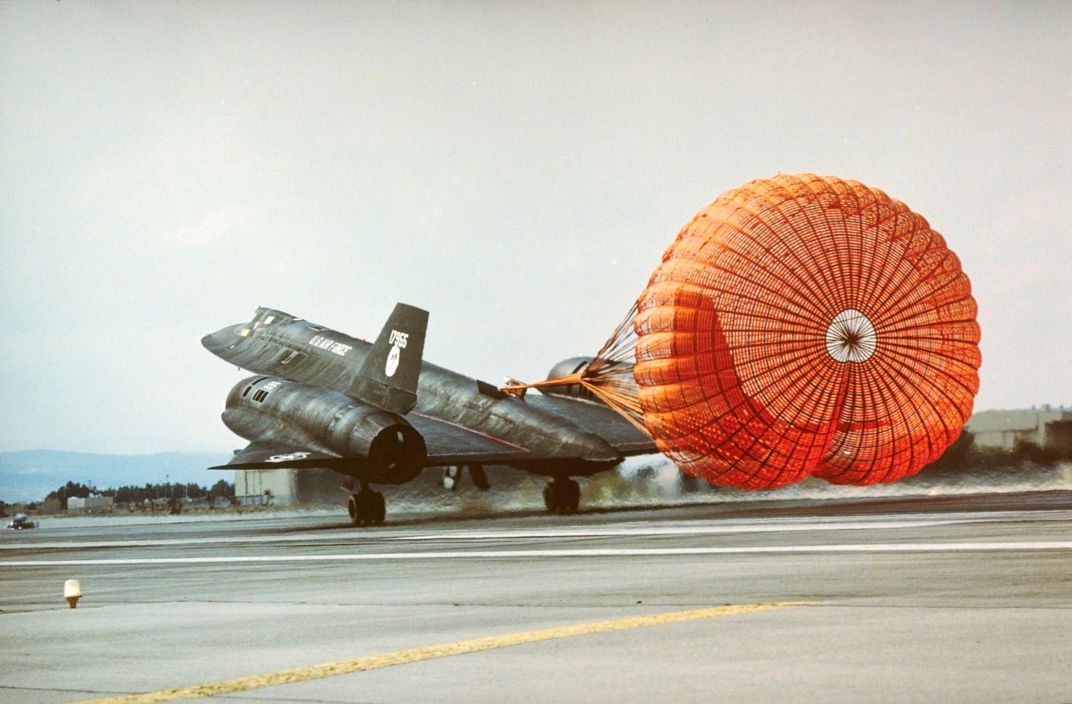
The jolt we had felt earlier on the acceleration was caused by the right drag chute door popping up into the slipstream and ripping loose from the aircraft. As the drag chute door departed, it acted like a can opener on fuel tank 6 and cut a ten-inch gash that allowed fuel to siphon out. The fuel leak caused our trim and CG transients that even the autopilot couldn’t keep up with. With no drag chute doors, the drag chute had departed the aircraft and was lost at sea. We were grateful to the Lockheed engineers for designing the drag chute to lock to the aircraft only when the drag chute handle was pulled. One can only imagine the effect of the chute deploying in-flight at Mach 1.5!”
Photo by Lockheed Martin and U.S. Air Force





